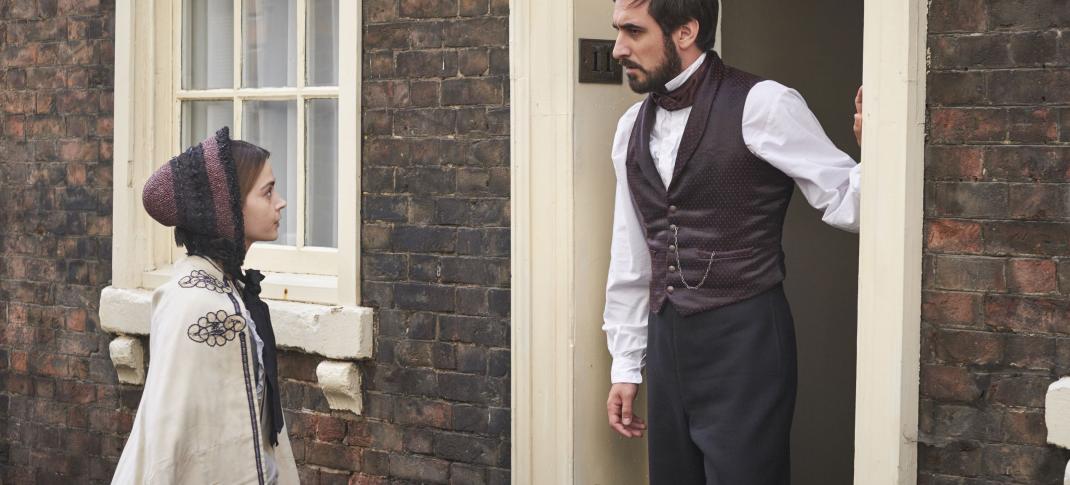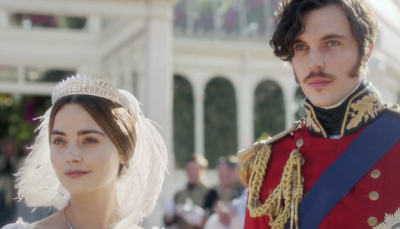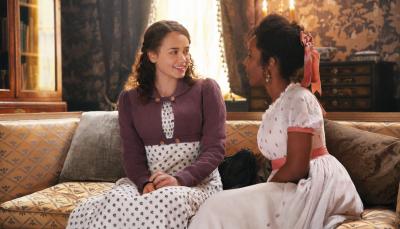Know Your 'Victoria' History: "Foreign Bodies"

MASTERPIECE Victoria, Season 3 Episode Four Sunday, February 3, 2019; 9-10pm ET When Albert leaves the Palace for Cambridge, Victoria faces the traumatic impact of a cholera epidemic on the streets of London. Picture Shows: Queen Victoria played by Jenna Coleman and Charles Francatelli played by Ferdinand Kingsley For editorial use only. Courtesy of Justin Slee/ITV Plc for MASTERPIECE
©Justin_Slee 2018
Think you know the history of Queen Victoria's reign? Wondering how much of the history portrayed by PBS series Victoria is accurate?
We take a look at the truth behind the drama in the fourth episode of Season 3, "Foreign Bodies."
Did Albert Reform Cambridge?
We're now in the period of Victoria and Albert's relationship where things got stormy, early and often. This week's marital spat includes Victoria refusing to let Albert head off to Cambridge, where he has been asked to stand for election to gain the Chancellorship of the University. As usual, Victoria is using a real-life event as a plot point, but one that's out of sequence in the historical timeline. The election where Albert became Chancellor was held in 1847, whereas the rest of this episode's drama is firmly set in the mid-1850s.
It was also accurate that several senior figures within the University were pushing to have Albert run unopposed. They failed. Instead, Albert found himself up against the Earl of Powis, a St John's man, a noted conservative and an anti-reformer. Albert was deeply reluctant to run against anyone and found the whole election process distressing and distasteful. But Powis discovered most of the Heads of the Colleges were supporting the Prince, and quietly backing the reform movement, even if they were reluctant to say so in public. Albert eventually won the election, allowing the University to begin the process of modernization. (For the record, Powis wouldn't have lasted long anyway. He died in 1848.)
John Snow & The Cholera Epidemic
Dry your eyes, we all know Skerrett was likely done as a character as soon as she left the Buckingham Palace. Let's talk about the disease that killed her. Cholera first came to London in 1832, only a few years before Victoria became Queen, and outbreaks came in waves throughout her reign, most notably from 1846-1860. The one the show deals with in this episode actually occurred in 1854, and nowadays is known as "The Broad Street Pump Outbreak." The disease had already killed 10,000 people the year before, and this looked to be no different with hundreds stricken within the first few hours.
Most of the stuff about Dr. John Snow, one of the fathers of modern epidemiology, is correct. And he did believe that the prevelant theory of the day, blaming "miasma” or "bad smell in the atmosphere," was wrong. Edwin Chadwick was one of the leading purveyors of "The Great Stink" theory. And this had its roots in an actual problem: The Thames was polluted beyond belief, and the air around it was disgusting. But one did not actually link to the other. Snow did indeed have the pump turned off, and the outbreak ended almost at once, though it turned out the disease wasn't inside the plumbing. A baby's dirty diaper had infected the mouth of it and contaminated the water.
Though, to be clear, Chadwick and his followers insisted Snow's solution was a coincidence, and the good doctor did not live to see his theory confirmed. He died during a later outbreak in 1858.
Did Victoria Meet Florence Nightingale?
Florence Nightingale was a leading figure in public health during Victoria's reign. (Though she, unfortunately, did subscribe to the "miasma" theory of how cholera spread.) And the Queen did eventually meet her, but it didn't happen quite like this.
Nightingale wasn't even in London during the 1854 outbreak, for one thing. She was sent off to be stationed at the British Army's Barracks Hospital in Scutari, Turkey, during the Crimean War. This was the posting that made her famous, as she was the one who spearheaded fixing the unsanitary conditions the injured were being kept in, and which were killing them in significant numbers, more than the war injuries they suffered. When her tactics dropped the number of dying by nearly fifty percent, she was then sent to barracks across Europe to teach her methods and standardize a level of care we take for granted today. And yes, she really did have a pet owl named Athena who traveled with her.
Victoria heard of Nightingale, and her revolutionary way of caring for the sick, during this period and sent several letters to her. This struck up a correspondence between the two women that went on for years before they met. Nightingale was invited to Balmoral Palace after the war ended, and there she and the Queen met face to face for the first time.




